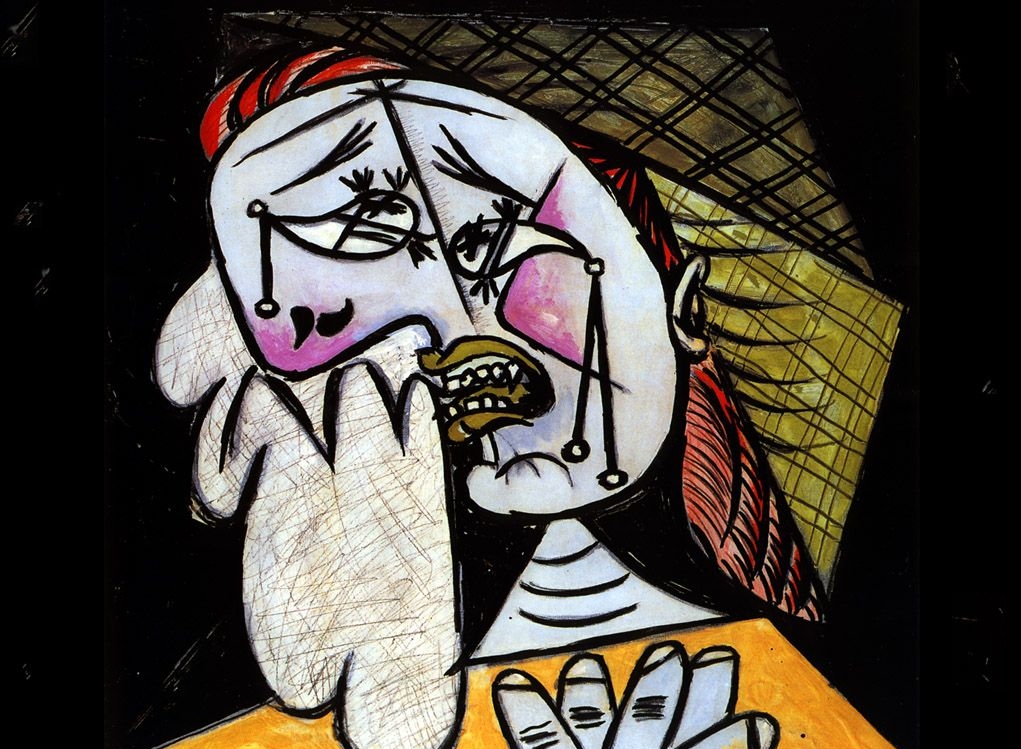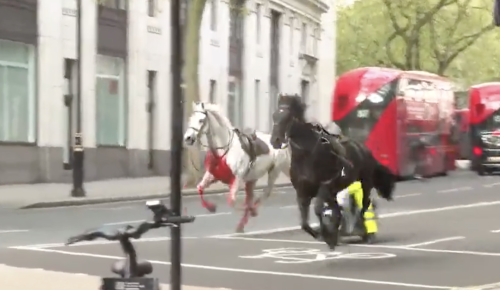

The mighty composition, painted by Michelangelo between 1536 and 1541, is centred around the dominant figure of Christ, captured in the moment preceding that when the verdict of the Last Judgement is uttered (Matthew 25:31-46). His calm imperious gesture seems to both command attention and placate the surrounding agitation. It starts a wide slow rotary movement in which all the figures are involved.





Excluded are the two upper lunettes with groups of angels bearing in flight the symbols of the Passion (on the left the Cross, the nails and the crown of thorns; on the right the column of the scourging, the stairs and the spear with the sponge soaked in vinegar). Next to Christ is the Virgin, who turns her head in a gesture of resignation: in fact she can no longer intervene in the decision, but only await the result of the Judgement. The Saints and the Elect, arranged around Christ and the Virgin, also anxiously await the verdict.
Some of them can be easily recognized: St Peter with the two keys, St Laurence with the gridiron, St Bartholomew with his own skin which is usually recognized as being a self-portrait of Michelangelo, St Catherine of Alexandria with the cogwheel and St Sebastian kneeling holding the arrows. In the centre of the lower section are the angels of the Apocalypse who are wakening the dead to the sound of long trumpets. On the left the risen recover their bodies as they ascend towards heaven (Resurrection of the flesh), on the right angels and devils fight over making the damned fall down to hell.














Finally, at the bottom Charon with his oars, together with his devils, makes the damned get out of his boat to lead them before the infernal judge Minos, whose body is wrapped in the coils of the serpent. The reference in this part to the Inferno of Dante Alighieri's Divina Commedia is clear. As well as praise, the Last Judgement also caused violent reactions among the contemporaries.
For example the Master of Ceremonies Biagio da Cesena said that "it was most dishonest in such an honoured place to have painted so many nude figures who so dishonestly show their shame and that it was not a work for a Chapel of the Pope but for stoves and taverns" (G. Vasari, Le Vite). The controversies, that continued for years, led in 1564 to the decision by the Congregation of the Council of Trent to have some of the figures of the Judgement that were considered "obscene" covered.
The task of painting the covering drapery, the so-called "braghe" (pants) was given to Daniele da Volterra, since then known as the "braghettone". Daniele's "braghe" were only the first and in fact others were added in the following centuries. | © Vatican Museums

























Il Giudizio Universaleè la composizione situata sulla parete retrostante l'altare della Cappella Sistina e fu progettata e realizzata da Michelangelo fra il 1533-1541. La sua collocazione fu frutto della specifica volontà del primo committente, papa Clemente VII, che però, giunse solo a vederne il modello compositivo: l'esecuzione in affresco del dipinto ebbe luogo sotto Paolo III e iniziò nel 1536 dopo una lunga e tormentata fase preparatoria.
Sulla parete, per rendere la superficie inclinata, fu applicato uno strato di mattoni di spessore maggiore in alto e minore in basso. L'inclinazione della parete serviva sia per migliorare la visibilità che per evitare il deposito delle polveri. L'affresco della parete del Giudizio Universale si presenta come un'unica grande architettura costituita da più parti tra loro collegate.
Le figure, raggruppate in singole formazioni plastiche, nuotano isolate in disperata solitudine nella tremenda infinità del vuoto.
In alto ci sono gli angeli che recano i simboli della passione, sotto, al centro, Cristo Giudice con Maria Vergine circondati dai beati e dai santi.
Nella fascia più in basso, nella parte centrale ci sono gli angeli con le trombe del Giudizio e ai lati i giusti che salgono verso il cielo e i dannati ricacciati agli inferi.
La resurrezione dei corpi e i dannati condotti all'inferno sono invece i protagonisti della fascia inferiore.
Nel 1564, un anno dopo la chiusura del concilio di trento, la Controriforma si abbatté fatalmente sul Giudizio Universale e i suoi scandalosi nudi. Il compito di censurare le nudità delle figure coprendole con le famose "braghe" fu affidata a Daniele da Volterra, da allora detto il Braghettone. Su quante figure sia intervenuto Daniele da Volterra non è chiaro: suo fu il rifacimento integrale di San Biagio, a cui modificò in particolare la posizione del capo voltandolo verso il Cristo Giudice, e quello parziale di Santa Caterina, che fu pudicamente ricoperta con una veste verde, conservando della versione originale la testa, le braccia e la ruota del martirio.
Il Dio di Michelangelo è un Dio d’amore ma anche di giustizia, come ci mostra nell’affresco del Giudizio Universale.
Il Giudizio Universale, quindi, è stato visto dalla critica come la manifestazione della sua solitaria lotta contro le forze della materia e del male.
Le figure si raggruppano in una sorta di moto rotatorio e si accrescono secondo un andamento ascensionale manifestando tutte le gerarchie divine.
Il corpo umano diventa il momento principale per ogni espressione, ma al tempo stesso si sottrae ai canoni estetici tipici della perfezione formale del classicismo rinascimentale.
Al centro è raffigurato Cristo circondato dai santi e con la madre al suo fianco.
Gesù è raffigurato con il braccio destro alzato in un gesto collerico di dannazione mentre con la mano sinistra chiama gentilmente a sé i beati.
La Madonna sotto il suo braccio, raggomitolata, e impaurita, raccolta in un manto blu, degno della tradizione, spettatrice di quel tumulto di movimento, di quel vortice di carne e spirito. Ella è l'avvocata nostra, colei che aiuta prima ancora che noi si domandi, così Dante la figura e così probabilmente l'ha pensata dipingendola Michelangiolo, ella è rimpicciolita dalla, o nella, potenza del figlio. Rappresenta l'aspetto dolce del divino che non smette di mostrarsi neanche nell'ultimo drammatico istante.
Sopra il Cristo Giudice, nelle due zone semicircolari, alcuni angeli portano gli strumenti della passione di Cristo: la croce sulla quale fu crocefisso, la corona di spine, i dadi con cui giocarono le guardie, la colonna della Flagellazione, la spugna con cui era stato abbeverato.
Nella lunetta di sinistra la croce è sorretta dall'Arcangelo Gabriele.
Da notare come tutti gli angeli che recano i simboli della passione di Cristo sono apteri, ovvero senza ali.
A causa del Giudizio Universale ci fu una pesante disputa tra il Cardinale Carafa e Michelangelo: quest'ultimo venne accusato di immoralità e intollerabile oscenità, perchè aveva dipinto delle figure nude, con i genitali in evidenza, nella più importante chiesa della cristianità. Una campagna di censura (nota come "campagna delle foglie di fico") venne organizzata da Carafa e Monsignor Sernini (ambasciatore di Mantova) per coprire le oscenità degli affreschi. Santa Caterina e San Biagio sono le due figure ritoccate da Daniele da Volterra con tecnica di rifacimento in affresco.
L'incarico di Michelangelo era di dipingere solo le 12 figure degli apostoli, ma a lavoro finito, nel Giudizio Universale sono presenti più di 3.000 personaggi.
I bozzetti sono un documento molto prezioso e curioso. Michelangelo usò modelli maschili, anche per le donne, poiché le modelle erano più rare e costose. Nella parte a sinistra del Cristo si possono riconoscere Sant’Andrea, girato di spalle, con la sua croce in mano e San Giovanni Battista, possente nella sua corporatura, potrebbe rappresentare Adamo.
Al centro dell'affresco ci sono un gruppo di angeli intenti a soffiare il loro trionfo, nel tentativo di svegliare i defunti dal lungo sonno.
In basso, alla sinistra del Cristo, è raffigurato San Bartolomeo. Sulla pelle che tiene in mano vi è un autoritratto di Michelangelo.
Si racconta che come reazione alle critiche del suo lavoro da parte di Biagio da Cesena, Maestro di Cerimonie del Papa, Michelangelo raffigurò i suoi tratti nella figura di Minosse, giudice degli inferi. Biagio da Cesena si lamentò di questo con il Papa, ma il pontefice rispose che la sua giurisdizione non si poteva applicare all'inferno e così la raffigurazione rimase. Secondo altri studiosi, invece, il personaggio ritratto in forme caricaturali nel Minosse sarebbe Pierluigi Farnese, figlio di papa Paolo III, noto a Roma per la sua immoralità e spregiudicatezza e per aver stuprato il giovane vescovo Cosimo Gheri causandone la morte.
In basso a destra ci sono i dannati che cercano in tutti i modi di rimanere agrappati alla terra per non scendere nelle viscere infernali, ma i tentavi sono vani, in quanto le creature diaboliche li trascinano con violenza verso di loro, precipitando come massi pesanti, così pesanti forse per il numero e la gravità dei peccati commessi. Emerge la figura di Caronte, il mitico traghettatore, presente nell’Eneide di Virgilio e nella Divina Commedia di Dante, nell'atto di spingere le anime dei peccatori fuori dalla barca verso l’Inferno per abbandonarli al loro drammatico destino. | © Vatican Museums





















































































































































.jpg)
.jpg)
.jpg)
.jpg)
.jpg)
.jpg)
.jpg)

























.jpg)
.jpg)

























































































































































































































































































































































.jpg)
.jpg)
.jpg)
.jpg)
.jpg)
.jpg)
.jpg)
.jpg)





























































































































































.jpg)

.jpg)
.jpg)
.jpg)
.jpg)
.jpg)
.jpg)
.jpg)
.jpg)
.jpg)
.jpg)
.jpg)
.jpg)
.jpg)
.jpg)
.jpg)
.jpg)
.jpg)
.jpg)
.jpg)
.jpg)
.jpg)
.jpg)
.jpg)
.jpg)
.jpg)
.jpg)
.jpg)
.jpg)
.jpg)
.jpg)
.jpg)
.jpg)
.jpg)
.jpg)
.jpg)
.jpg)
.jpg)
.jpg)
.jpg)
.jpg)
.jpg)
.jpg)
.jpg)
.jpg)
.jpg)
.jpg)
.jpg)
.jpg)
.jpg)
.jpg)
.jpg)
.jpg)
.jpg)
.jpg)
.jpg)
.jpg)
.jpg)
.jpg)


.jpg)
.jpg)
.jpg)
.jpeg)
.jpeg)
.jpg)
.jpeg)
.jpg)
.jpg)
.jpeg)
.jpg)
.jpg)
.jpeg)
.jpg)
.jpeg)
.jpg)
.jpg)
.jpg)
.jpg)
.jpg)
.jpg)
.jpg)
.jpg)
.jpg)
.jpg)
.jpg)
.jpg)
.jpg)
.jpg)
.jpg)
.jpg)

























































